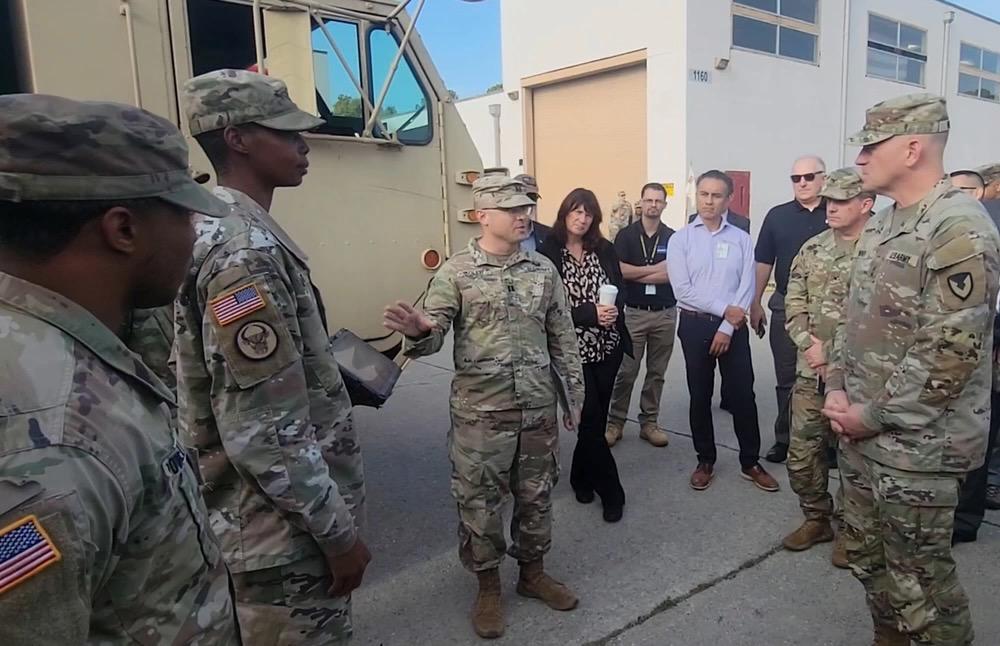Breaking Down Readiness Barriers with a Bottom-Up Strategy
A recent GAO report found that the Department of Defense (DoD) has made limited progress toward the adoption of predictive maintenance capability in the 20 years since an initial policy was outlined. Cultural challenges and technology availability gaps have hampered progress at every turn, and years of effort have resulted in a long list of pilot activities that have not scaled successfully or reached their full potential.
Related enterprisewide initiatives including condition based maintenance plus (CBM+) and joint all-domain command and control (JADC2) are facing similar barriers. Our joint force readiness depends on examining these common roadblocks and evolving how we approach large-scale transformation efforts to drive more impactful outcomes in the future.
The allure of huge gains across capability, cost saving and efficiency can entice any leader into implementing bold, top-down strategies. For CBM+ the value is clear: greater aircraft availability, reduced cost of inventory, more predictable supply chains and maximizing the value of maintenance professionals’ valuable time and skills. Similarly, the vision of JADC2 offers shorter decision times, greater domain awareness and reduced kill chains. With the stakes this high, and the value so clear, the temptation is to drive enterprise-level solutions that can serve all stakeholders—from tactical to strategic—across the services. The vision is admirable but the complexity of execution is where things break down.
As much as we think of the DoD as a single entity, the reality is that our services are built to function separately. Across people, processes and budget, each service has its own hierarchical structure that governs its ability to operate. This is steeped over years and years of rigid execution, and while offices are established to enable joint initiatives to operate, achieving cross-service scale has always been an extraordinary challenge.
This reality is on full display across both CBM+ and JADC2. In the case of CBM+, each service has its own effort. The U.S. Air Force has CBM+ and the Rapid Sustainment Office, while the Army has Predictive and Prognostic Maintenance out of Army Materiel Command. For JADC2, the USAF has its Advanced Battle Management System, the Navy has Project Overmatch and the Army has Project Convergence. And these are just a few of the primary organizations amongst many other supporting efforts.
These stovepiped approaches inherently come with barriers across both people and technology. Each initiative is built on separate foundational architectures, using isolated data sets implemented by different leadership teams. Currently, there are unique ownership rights and stovepipes that turn the data environment into a series of fiefdoms. This limits the potential for reuse across services and the lack of a common operating approach inhibits the ability to scale across the DoD.
The weight and struggle of breaking down these barriers have inhibited any meaningful progress, and when faced with resistance, each service’s status quo kicks in and rejects the new initiative.

For CBM+ the value is clear: greater aircraft availability, reduced cost of inventory, more predictable supply chains and maximizing the value of maintenance professionals’ valuable time and skills.
Scaling these enormous initiatives requires seamless access to the best information, backed by a steady execution approach that creates quick wins and builds organizational momentum over time. Below are four strategies for making it happen:
- Unlock the data and centralize a single version of the truth. Data—across services and the contractors that support them—must become more accessible and actionable. This means collecting the right data that goes beyond diagnostics to include operational context to power mission decision-making. It also means easing ownership rights without sacrificing security and bringing all relevant information into a single environment to be shared and analyzed. To make true progress all stakeholders need access to a comprehensive, single source of truth.
- Turn operators into advocates. Once everyone is on the same page, it becomes about empowering the people that are going to make it happen. Many initiatives suffer because of a lack of enthusiasm from execution teams. Without the “why” it’s easy for personnel to see change initiatives as another task to finish while they continue to do their day job. Leaders must create ownership, excitement and a sense of purpose while freeing up personnel to devote the necessary time to these efforts. If done correctly the execution teams will become the strongest advocates for change.
- Define metrics and celebrate wins. Initiatives live and die by results. Creating the mechanisms to track, codify and communicate wins and losses within an effort greatly improves success rates. Individual contributions and project milestones should be shared and celebrated to optimize organizational buy-in, reinforce the right behaviors, and drive positive morale and momentum for the initiative.
- Build with scale in mind, not as the priority. Scaling an initiative at the outset shouldn’t be the top priority, but building a foundation that can enable further growth is critical. It starts with scalable technology that can evolve alongside the initiative and documented processes that can be easily shared and embraced by other teams. With those pieces in place, success is really about maintaining a steady pace of adoption aligned with the enterprisewide road map of growth.
Initiatives like CBM+ and JADC2 have the potential to transform the way we maintain our assets and enable our warfighters. While the desire to push these massive efforts forward in a top-down fashion is alluring, the more effective approach is creating pathways that enable quick wins through cultural adoption, organizational momentum and celebrating tangible successes along the way. Our military must think in these terms if we expect to achieve the results we believe are possible.
Logan Jones is the president and general manager of Sparkcognition Government Systems.
David Mazar is the vice president, Strategy & Growth, Sparkcognition Government Systems.
The opinions expressed in this article are not to be construed as official or reflecting the views of AFCEA International.

While the desire to push these massive efforts forward in a top-down fashion is alluring, the more effective approach is creating pathways that enable quick wins through cultural adoption, organizational momentum and celebrating tangible successes along the way.




Comments